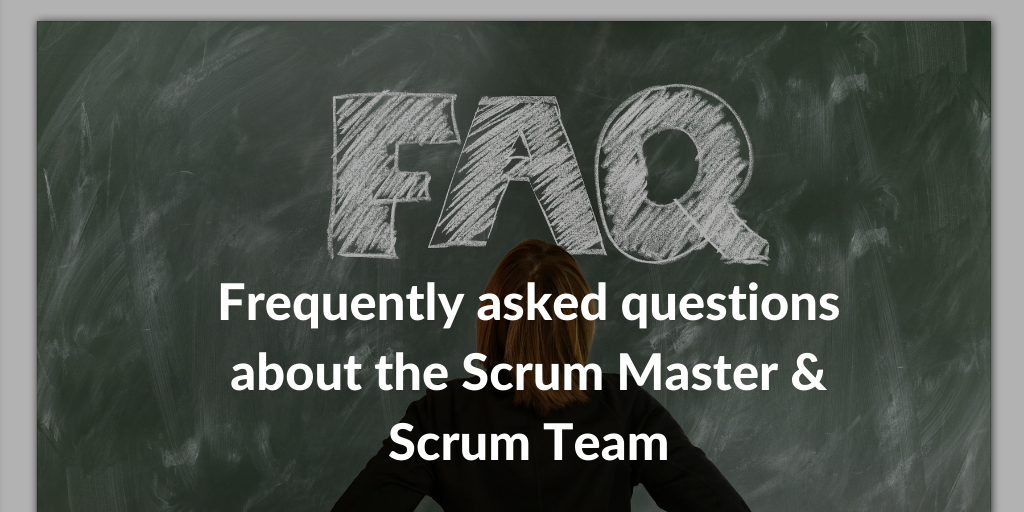In Scrum, Team members work together to achieve shared goals, in an environment of collective responsibility and continuous progress.
In this webinar we discussed the role of Scrum Master within the Scrum Team with the expert Kim Delgadillo. Ever since we have been receiving many questions about the role of the Scrum Master and the Scrum Team in general. This blogpost, written by one of our Scrum experts, is aimed to take away all doubts about the Scrum team and answer all your questions.
1) How important is the technological competence of the Scrum master? At times it may seem like the Scrum Master is a simple motivator with management skills rather than IT, or is it the link between the product owner and the team?
By carefully reading the guide to Scrum by Ken Schwaber and Jeff Sutherland we find no reference to “Technological” competences of the Scrum Master. But it is absolutely possible that the Scrum Master is also part of the Development Team.
2) Do customers easily accept to pay a Scrum team for a specific period without however being certain the final result?
If you are used to procurement through “Fixed Scope” contracts, it can be difficult to change even if the goal is to seize an opportunity. Remember, Agile is a mindset. Therefore it is necessary for everyone (Customer / Supplier) to evolve; from a “closed” approach, with low external sharing, it is necessary to gradually move to an “open” approach, based on a cycle of learn-share-collaborate-improve, to encourage the exchange and transfer of knowledge in unconventional ways.
Curious to start to work more Agile? Read here our blog about the Agile transformation; the kickstart.
3) What responsibility does the Scrum Master usually have in the context of cost and time control of a project?
The Scrum Master has many responsibilities, but among these there are no items that specifically concern the management of Time & Cost project constraints. It is a shared responsibility of the entire Scrum Team. Remember that Time & Costs are fixed and that the Scrum Team must be “Good” in setting the Sprint Goal. Here you can discover the responsibilities of the other Scrum Team members; the Scrum Developer and the Scrum Product Owner.
4) If after multiple sprints the sprint goal is not reached, is this a failure for the Scrum Master? And what approach should the Scrum Master take in this circumstance?
The situation described is not a failure for the Scrum Master but certainly is a reason for reflection for the entire Scrum Team; issues to reflect on could be:
- What did we not understand about the project / product?
- Is there a technical knowledge gap to fill?
- Internal / external changes to the client that make the sprint goal systematically obsolete?
5) But if the objectives are not reached during the sprints, does that mean that the time of the project is prolonged? If so, how does that work with the costs?
When the approach is Predictive in the early stages of the project, the focus is on detailing the planning by basing the estimates on the Scope defined in the formal documents (plan-driven approach). During the life cycle of the project, the project plan will be the work management guide and the reference for calculating progress. Changes are managed through a formal system and the value is generated at the end of the project, upon delivery of the final product.
When, on the other hand, the requirements are unstable it is advised to focus on making decisions that give priority, and therefore time precedence, to activities with greater added value and actions for greater risk reduction (value-driven approach). It is advised to set budgets and create a planning in advance and to make the project scope negotiable. This rather than trying to fix the characteristics of the product, which will consequently determine the times and costs of implementation (plan-driven approach).
When the approach is adaptive, therefore, the planning is carried out iteratively before each Sprint / Iteration, you are able to respond quickly and effectively to change. This results in a reduction in costs and, ultimately, an increase in profitability and Return on Investment (ROI). In more general terms, we move from an “inside out” model, where you make and sell your product on the market, to an “outside in” model, where you iteratively build the product / service together with your customer. Here the focus is on the Minimal Viable Product (MVP).
6) Does the Scrum Product Owner also participate in the Sprint Retrospective phase? If so, what role does he/she play in the development team?
The Agile Business Consortium “strongly recommends” the presence of the Scrum PO during the Sprint Retrospective meeting; like all members of the Scrum Team, he/she introspects and actively participates with the goal of continuous improvement.
7) What does the Scrum Product Owner have to say during the daily? Isn’t that an obstacle to the Scrum Master in facilitating the ease of the team?
The Product Owner may be a member of the Development Team. This is a perfectly viable situation and in such circumstances the PO can obviously participate and participate fully in the Daily Scrums.
If the PO is not part of the Development Team, there are different schools of thought. Eg. Agile Alliance suggests keeping the PO out of the Daily Meeting, Agile Business Consortium instead recommends the participation of the PO and suggests the Development Team to invite the PO (it’s a good idea to share the choices and the commitment).
Wondering what the daily meeting looks like? Read here the 5 rules for a flawless stand-up meeting.
Have you already downloaded the article “Discovery of Scrum: the foundation”? Some of the topics covered in the article: sprint, review meeting, retrospective meeting, user story, roles in Scrum, daily scrum meeting.
Find our Scrum Master certification course here.









